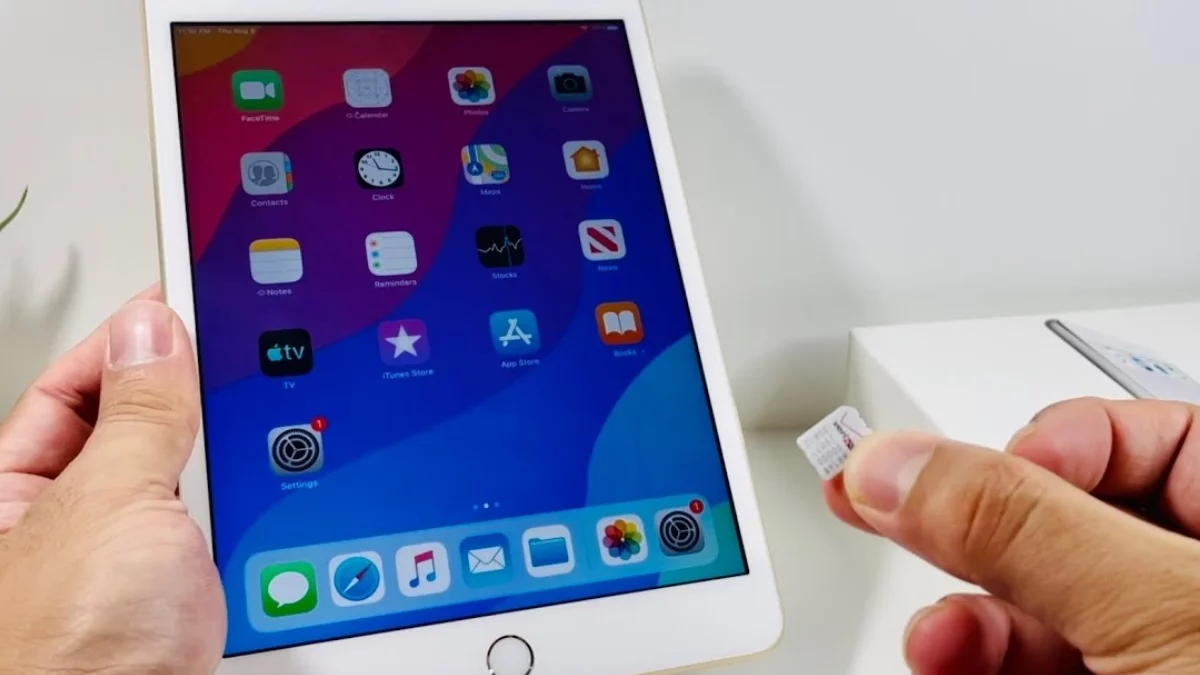There are two main options of iPad available in the market: Wi-Fi-only and cellular iPad. A cellular iPad can use a SIM card or has an embedded SIM (eSIM) in it so it can connect to the cellular network. A Wi-Fi-only iPad, on the other hand, can only connect to the internet when there’s Wi-Fi.
Besides the cellular connectivity, the main difference between the two models is the price. On average, the cellular iPad is around $130 more expensive than the Wi-Fi-only model. So, the real question is whether the price difference is justified, based on your needs. Here, we will try to help you answer that question.
Table of Contents
Wi-Fi VS Cellular iPad
In choosing between the two iPad models, there are two key differences to consider:
Cellular Data
This one is pretty obvious, and we have discussed it briefly above. With a cellular iPad, you have the ability to connect to a cellular data network to access the internet, so you don’t have to rely on Wi-Fi availability.
If, for example, your daily commute is relatively long and you want to enjoy internet connection on your iPad while on the road, then probably you’d want cellular connectivity.
GPS
Another important difference between the two iPad models is GPS capabilities. Only the cellular iPad has a built-in GPS antenna so it can pinpoint the iPad’s location accurately even when there’s no Wi-Fi around. A Wi-Fi-only iPad, on the other hand, utilizes a Wi-Fi positioning system to pinpoint its location based on known Wi-Fi hotspots.
Not only is a cellular iPad more accurate in GPS, but in cases when you lose your iPad, you can’t use the Find My iPad function when there’s no Wi-Fi around with a Wi-Fi-only iPad.
So, are you going to need these two functions, and are you willing to pay the $130 extra and the monthly fees for your iPad data plan? Below are the key considerations:
- Are you going to use your iPad as a phone and to regularly send text messages? If yes, then an iPad cellular is your best bet.
- Are you going to travel with your iPad regularly? Are you going to use your iPad away from Wi-Fi access?
- Are you going to use your iPad mainly at home and work, and can share your phone’s internet connection if necessary? Then you should get a Wi-Fi-only iPad.
- If you live or work somewhere without broadband internet access (at least, reliable ones) but you have cell phone coverage, then you can use your cellular iPad to serve as a personal hotspot and provide a Wi-Fi signal for your other devices.
- Can you download your media (ebooks, music, videos) before you are going to consume them?
- Do you need regular GPS use, for example, if you are going to use Google Maps regularly when on the road and/or when traveling away from your country? Again, only cellular iPad has built-in GPS.
- You are going to use Apps that require internet access to work like online games, GPS navigation, etc. In this case, a cellular iPad is preferred.
Cellular iPad: Nano-SIM vs eSIM
If you’ve set your mind in getting a cellular iPad, then it’s important to note that there are several different cellular connectivity options on iPads that are available in the market. There are iPads with an empty SIM card tray that you’ve probably familiar with, and iPads with eSIM or Apple SIM.
As a general rule of thumb, the latest generation of iPads features the new embedded SIM (eSIM) technology, some pretty recent iPads feature integrated Apple SIM (Apple’s version of eSIM) and the older models have empty nano-SIM card trays. Depending on your region, you might still get a SIM card tray (along with the eSIM) with the newest iPad models.
The eSIM is a built-in chip inside the newer iPads that functions as a traditional SIM card. However, instead of storing just one subscription data, an eSIM can download subscription data from various network carriers over the air. Meaning, you are no longer tied to a single cellular network with your SIM card.
So, you can easily switch between different carrier networks and/or data plans without needing to switch your physical SIM card, but just with an App provided by the carrier network, or via your iPad’s built-in Settings.
Here are Some Important Benefits of eSIM Technology:
- Easy to switch between one network to another without needing to change physical SIM cards
- Immediate activation/bootstrapping. Once you’ve purchased a plan, you don’t have to wait for the SIM card to arrive in the mail.
- Great if you travel a lot with your iPad with various network providers offering international data plans. iPad data plans by Truphone, for example, have coverage in more than 100 countries.
- You won’t damage or lose your SIM card when taking it out. In general, an eSIM is much more durable than traditional nano-SIM due to how it’s protected by your iPad’s shell and its much smaller size compared to the nano-SIM card
- You can use more than one plan (dual SIM), for example, you can use a data plan from Truphone and voice/text-only plan from Verizon to maximize cost-efficiency/reliability.
End Words
If you are planning to get a cellular-enabled iPad, then you might as well try to get the newer ones that have featured the eSIM technology. eSIM offers various benefits over the standard nano-SIM card, especially in how you can easily switch between different network carriers and different plans. This is a very useful feature if you travel a lot with your iPad, so you can easily switch data plans to avoid roaming charges as you move between countries.

